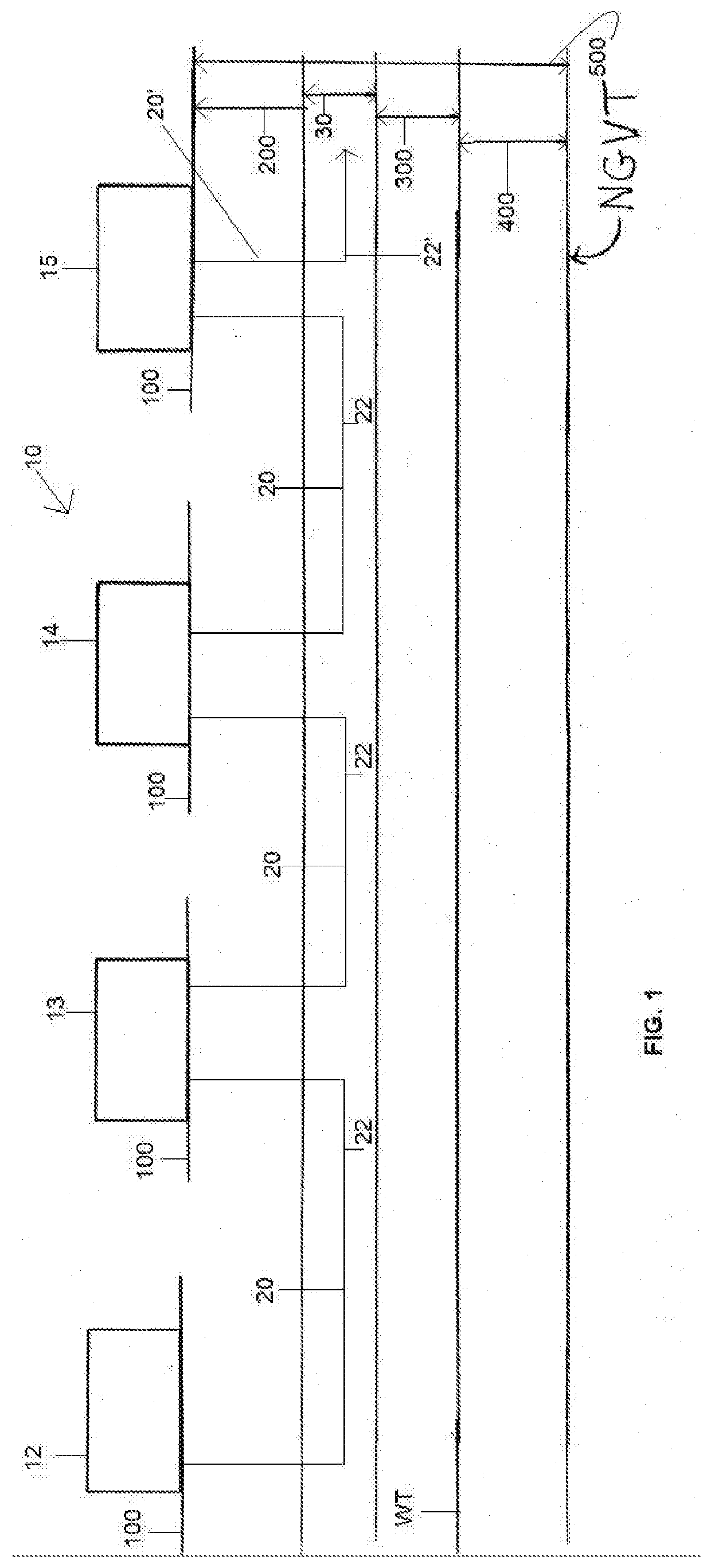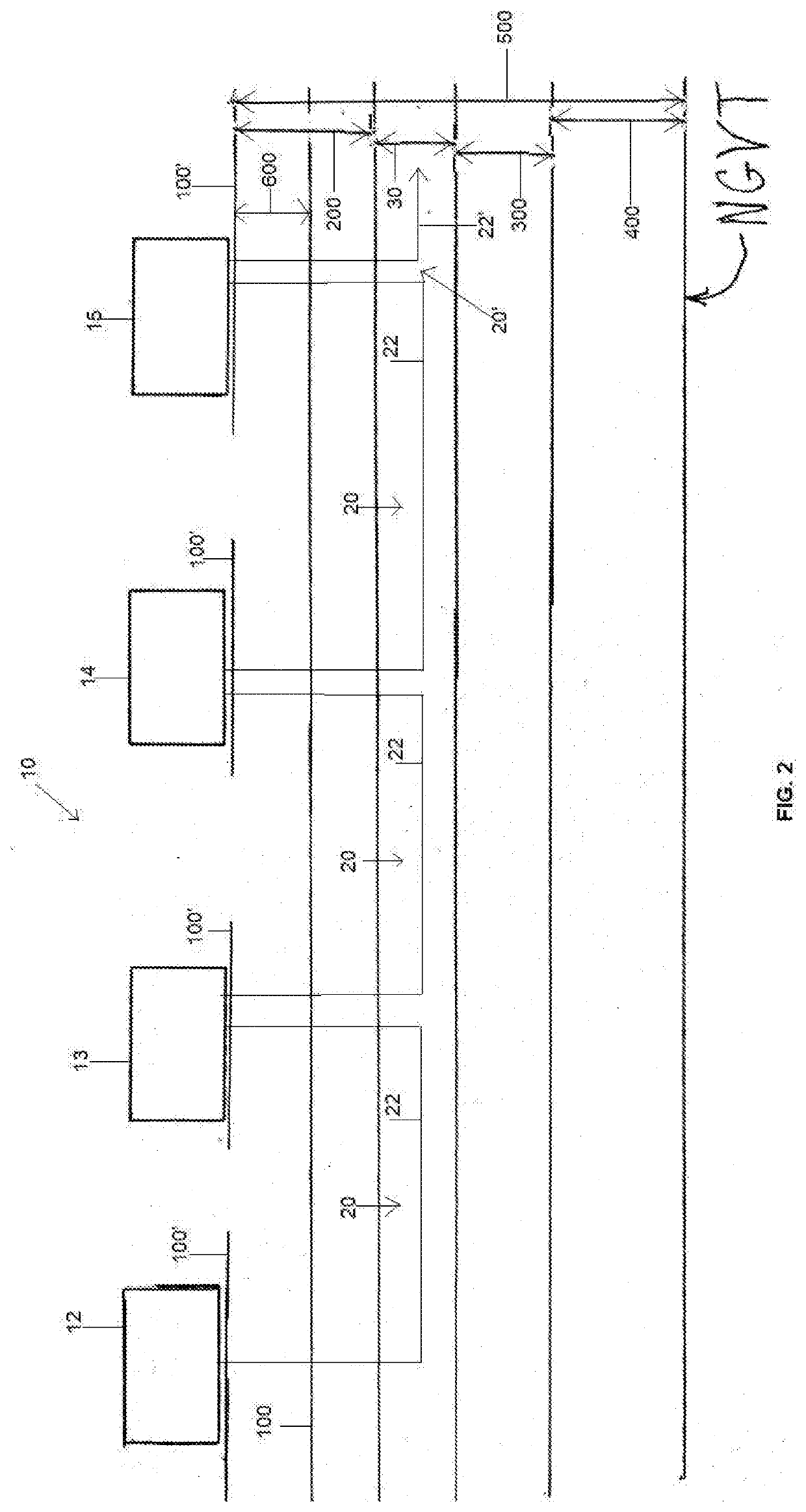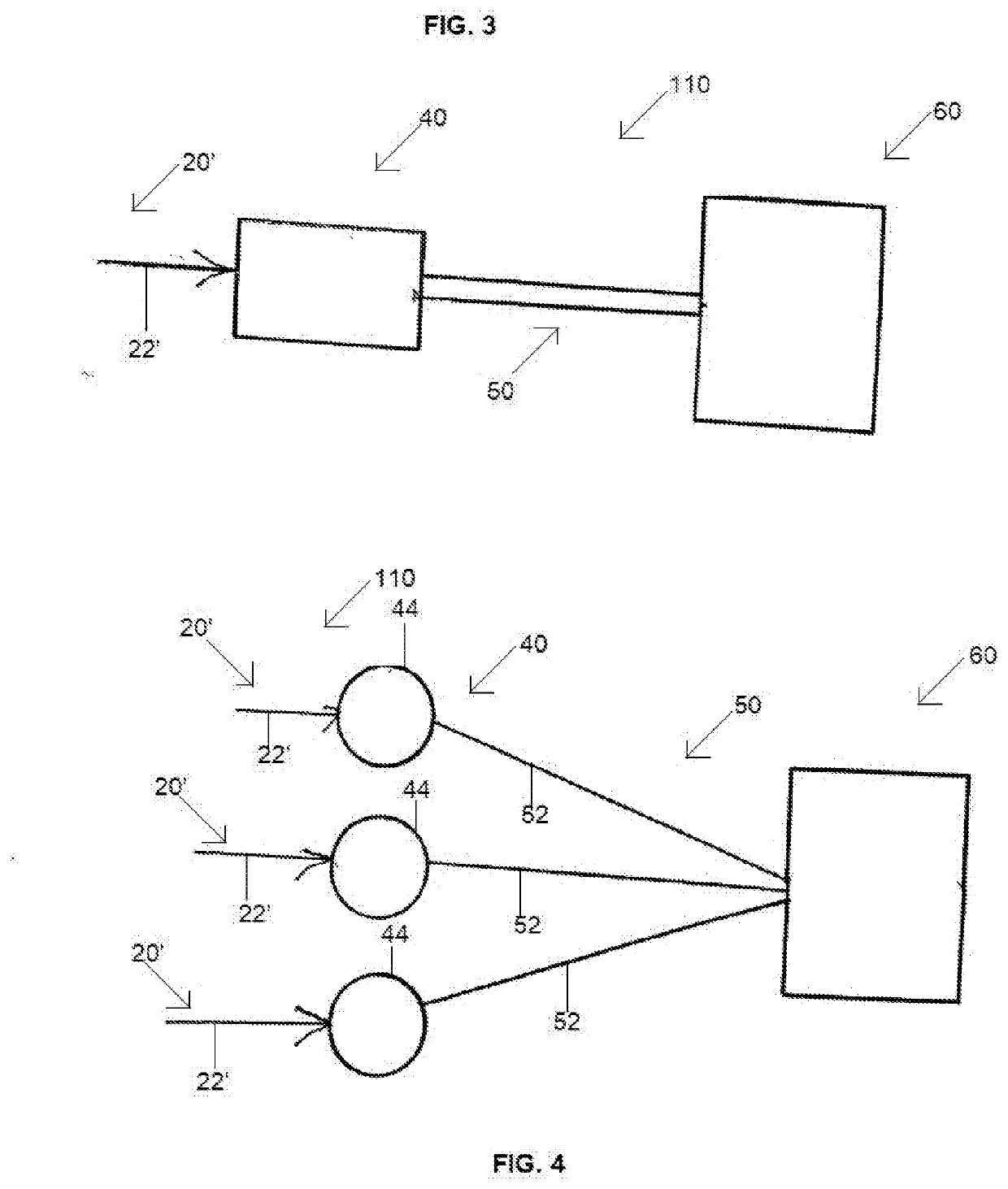Transfer assembly and system for aquaculture
a technology of transfer assembly and aquaculture, applied in the direction of filtration treatment, multi-stage water/sewage treatment, separation process, etc., can solve the problems of transferring marine life between different tanks, based on their stages of development, and alarming decline in conventional fisheries, so as to ensure the quality of marine life eventually harvested
- Summary
- Abstract
- Description
- Claims
- Application Information
AI Technical Summary
Benefits of technology
Problems solved by technology
Method used
Image
Examples
Embodiment Construction
[0045]As schematically represented in the accompanying Figures, the present invention is generally represented as 10 and is directed to the transferring of marine life within an aquaculture system, between a plurality of storage facilities 12, 13, 14, 15, etc. based, at least in part, on a stage of growth and / or development of the marine life while being processed. For purposes of clarity, the storage facilities 12-15, etc. each include structures such as, but not limited to, tanks maintaining containment water for the marine life which are adequate in number and dimension to process the marine life during a particular stage of growth and / or development. Also, as used herein the term aquaculture system is meant to include, but not be limited to, a recirculating aquaculture system (RAS).
[0046]Further, in the different embodiments of FIGS. 1 and 2 each of the storage facilities 12-15, etc. may include a single tank or like containment structure or a plurality of such tanks or containm...
PUM
| Property | Measurement | Unit |
|---|---|---|
| time | aaaaa | aaaaa |
| weight | aaaaa | aaaaa |
| weight | aaaaa | aaaaa |
Abstract
Description
Claims
Application Information
 Login to View More
Login to View More - R&D
- Intellectual Property
- Life Sciences
- Materials
- Tech Scout
- Unparalleled Data Quality
- Higher Quality Content
- 60% Fewer Hallucinations
Browse by: Latest US Patents, China's latest patents, Technical Efficacy Thesaurus, Application Domain, Technology Topic, Popular Technical Reports.
© 2025 PatSnap. All rights reserved.Legal|Privacy policy|Modern Slavery Act Transparency Statement|Sitemap|About US| Contact US: help@patsnap.com



